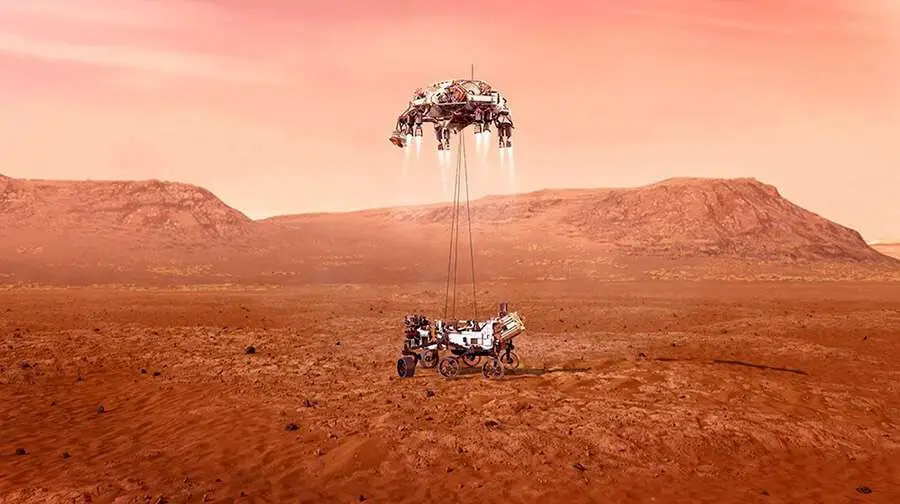Oxygen on Mars

A giant step forward in man's conquest of other planets. For the first time, oxygen has been created outside the Earth. A real milestone, achieved by Perseverance, the NASA, the American space agency, which is exploring Mars.
The machine in charge of the experiment was Moxie, which means courage or determination, but is also the acronym for Mars Oxygen In-Situ Resource Utilization Experiment, a device the size of a child's shoebox. Using electrical pulses and chemical decanting, Moxie is able to absorb carbon dioxide from the Martian atmosphere and split its molecules so that the result is oxygen on the one hand and carbon monoxide on the other.
In his first successful experiment, Moxie has managed to produce exactly five grams of oxygen, the amount needed for an astronaut to breathe for ten minutes. It paves the way for man to overcome one of the biggest obstacles in his conquest of outer space: making and disposing of the most essential element for life.
Manufactured by engineers at the Massachusetts Institute of Technology (MIT), the 17-kilogram device is made of materials capable of withstanding the 800-degree Celsius temperatures required to operate it. To prevent such an overwhelming amount of heat from rupturing the box and projecting outside, with the obvious risk of damaging or even destroying the Perseverance container vehicle, Moxie is coated with a thin but ultra-resistant gold metallic layer.
After the success of this first experiment, the next goal of the MIT technicians is to build a one-tonne Moxie. The engineers estimate that this size could produce the 25-27 tonnes of oxygen required to propel an Earth-bound spacecraft from Mars. If repeated use of the device is ensured, the continuous production of oxygen would allow astronauts to arrive, stay and return without having to transport it from our planet, with the enormous costs and risks that this would entail.
As one of NASA's administrators, Jim Reuter, said when reporting on the experiment, "one of the most crucial stages has been passed". Indeed, if the feasibility of making oxygen from an atmosphere like Mars', which is 96% carbon dioxide, is verified, it would certainly be easier than the process of extracting the remnants of ice in the Martian subsoil to make it by electrolysis.
The Perseverance mission has gone from success to success since it landed on 18 February. Before Moxie, the Ingenuity mini-helicopter was able to take off and make the first autonomous flight several metres above the surface of the Red Planet. The space adventure has undoubtedly gained momentum once again.



